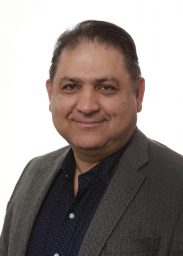
Amir Radfar
College of Medicine, University Of Central Florida (UCF)
USA
Palliative Care Educational Content Development for General Practitioners in Farsi Language
Background
Palliative care is considered one of the pillars of cancer control and plays an essential role in managing cancer complications and treatment. Per the World Health Organization (WHO), palliative care is defined as a series of measures to improve the quality of life of patients and their families and to solve problems associated with the incurable life-threatening illness through the prevention or relief of suffering employing an early diagnosis and the assessment and treatment of pain and other psychological, physical, and spiritual problems1. Palliative care and pain relief are considered essential elements of universal health coverage (UHC).
Primary palliative care versus subspecialty palliative care
Palliative care can be offered by palliative care specialists who work alongside the patients’ primary care physician and is known as subspecialty palliative care, which is now recognized as a medical subspecialty in many countries. The specialty of palliative care is mostly available in high-income countries but is generally quite limited in the middle- and low-income countries. Alternatively, clinicians who are not palliative care specialists can offer palliative care for seriously ill patients and provide basic palliative care. These palliative care services are called primary or basic palliative care. They may include basic pain management, basic management of other physical symptoms, basic use of adjuvant pain relievers, basic care coordination, and routine care of seriously ill patients. Primary palliative care can foster clinician-patient relationships, reduce care fragmentation, alleviate pain and suffering, and provide empathic care. However, primary care physicians require basic palliative care competencies and skills to provide disease management and symptom palliation 2.
Primary palliative care educational project
The development of the evidence-based, culturally sensitive primary palliative care content material in Farsi (which is spoken by an estimated 110 million speakers mostly in Iran, Tajikistan, Uzbekistan, Iraq, Russia, Azerbaijan and Afghanistan)3 for the general practitioner is the main objective of this educational project.
Educational contents provided by this pilot study were verified by subject matter experts and addressed the current challenges in primary palliative care. These educational subjects include the physical, psychological, social, and spiritual sources of pain and suffering experienced by patients and their families. Sessions covers subjects on pain and symptom management, interdisciplinary teamwork and collaboration among disciplines involved in the care of patients, disease communication skills, bereavement, special needs of patients at various stages of the life cycle and best practices toward the end-of-life care. The educational materials will be updated continuously on an online platform, and a certificate of attendance will be offered to the participants. This pilot project is eventually planned to be used as a model for establishing an independent discipline of primary palliative care.
This project distinguishes itself through the following characteristics:
Specific: as a pilot study to design educational content material in palliative care for the general practitioners in Farsi language.
Measurable: an assessment of acquired knowledge will be performed through an online medium.
Attainable: the content would be adapted from the International Evidence-Based practices and Guidelines.
Relevant: the content material will be used for continuous medical education and future teaching material in palliative care in Farsi Language.
References
1. World Health Organization (WHO). (2021). Palliative care. Retrieved from https://www.who.int/health-topics/palliative-care
2. Bowman, B., & Meier, D. E. (2018). Palliative care for respiratory disease: an education model of care. Chronic respiratory disease, 15(1), 36-40.
3. Windfuhr, Gernot: The Iranian Languages, Routledge 2009, p. 418.